The world of artificial intelligence is undergoing significant transformation. Traditional single-task bots and simple chatbots are giving way to a new, more dynamic class of AI architecture: multi-agent systems. These systems form the backbone of Agentic AI, a new paradigm where AI doesn’t merely react to simple commands, but can plan, reason, and act to achieve goals.
As AI continues to evolve from narrow capabilities to autonomous intelligence, multi-agent systems offer the scalability, adaptability, and modularity needed to meet the complex needs of real-world environments, especially in enterprise scenarios.
What Are Multi-Agent AI Systems?
A multi-agent AI system is composed of multiple AI agents, each designed with a specific function, skill, or objective. These agents interact with each other and the environment to complete complex tasks collaboratively. The agents can communicate, negotiate, share knowledge, delegate tasks, and escalate issues when necessary.
Unlike traditional AI systems, where a single agent handles all responsibilities, multi-agent systems divide the workload and specialize roles, which results in more intelligent, efficient, and adaptive performance. We can keep evolving the skills to;
Analogy: Human Teams vs. One-Man Shows
Just as a high-performing team of specialists can outperform a single generalist, a network of cooperating AI agents can achieve more than one all-purpose chatbot. Most human work esp. in enterprise context gets done in teams collaboratively – so this idea of multi agent AI is very rooted in human behavior.
Multi-Agent vs. Single-Agent Systems: A Comparison
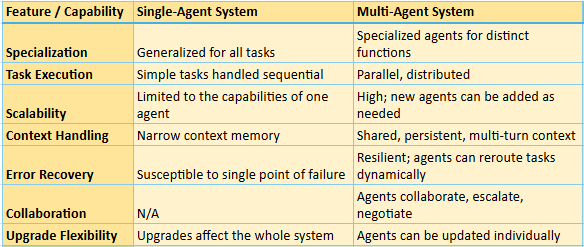
How Multi-Agent Systems Enable Agentic AI?
Agentic AI refers to systems where AI agents demonstrate autonomy, goal-orientation, and adaptive decision-making. Multi-agent frameworks are foundational to enabling this behavior in four critical ways;
1. Specialization and Modularity
Each agent is tuned to a particular domain or task, such as knowledge retrieval, ticket routing, task execution, or workflow analysis. This allows for faster iteration and focused improvements, leading to higher performance in each domain.
2. Collaboration
Agents can learn from each other and exhibit collective intelligence. For example, a workflow agent might rely on input from a knowledge agent and a user-profile agent to make more contextually relevant decisions.
3. Context Awareness and Adaptation
Multi-agent systems can maintain and share long-term context, allowing them to adapt their behavior based on ongoing interactions, changing priorities, or unexpected conditions.
4. Resilience and Redundancy
Tasks can be rerouted, agents can recover or alert others when failing, and the system can adapt to partial outages—ensuring reliability in mission-critical applications.
Multi-Agent AI Examples: Enterprise Support with Rezolve.ai
Platforms like Rezolve.ai showcase how multi-agent systems power advanced enterprise experiences. For Example, in AI for ITSM Rezolve.ai uses 7 agents to handle each user interaction
- Troubleshooting and Triaging Agent
- Human Escalation Agent
- Automation Agent
- Ticket Insights
- Knowledge and Enterprise Search
- Data Leak Prevention Agent
This creates a proactive, self-evolving support layer that functions seamlessly within tools like Microsoft Teams or Slack.
Multi-Bot Presence Across Platforms
As enterprise IT continues to evolve, it’s becoming increasingly common to deploy multiple specialized AI agents across different platforms. For example, an Employee Support AI agent might need to interact with a Workday AI agent for HR tasks, a Concur agent for expense management, and a Salesforce agent for sales-related support.
The key challenge is ensuring that these interactions are seamless, intelligent, and context aware. If an employee begins an IT support conversation but then needs to approve a Concur expense or submit a leave request in Workday, the AI should handle these transitions fluidly—without breaking the flow or requiring the user to restart the process in a different system.
Rezolve.ai addresses this challenge by acting as a context-aware concierge across the entire conversation. It continuously monitors topic shifts, context changes, and user sentiment. Based on this awareness, it can intelligently transition between different AI agents or escalate to a human when necessary. This ensures a smooth, unified, and responsive support experience.
The Role of A2A Protocols in Agentic Systems
At the core of multi-agent collaboration lies the Agent-to-Agent (A2A) Protocol. This protocol governs how agents interact, share states, request or delegate tasks, and resolve conflicts. It is crucial for:
- Interoperability: Ensures agents built with different frameworks or languages can still communicate effectively.
- Coordination: Helps agents understand task dependencies and manage priorities across distributed systems.
- Autonomy Management: Maintains guardrails so that autonomy does not lead to uncoordinated behavior.
Why Does A2A Matters?
Without a well-defined A2A protocol, multi-agent systems become fragile and chaotic. With A2A, Agentic AI becomes predictable, secure, and truly autonomous.
Benefits of Agentic AI Enabled by Multi-Agent Systems
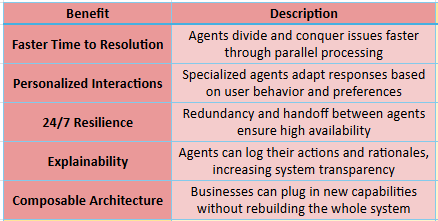
In Closing
The shift from single-task bots to multi-agent AI systems marks a new chapter in intelligent automation. These systems not only enable greater functionality and user experience—they also serve as the foundation for truly Agentic AI.
In a world where complexity, scale, and adaptability are paramount, multi-agent systems—with role-specific agents—are not just an upgrade; they are a necessity. Two key advantages of multi-agent AI systems are;
- They enable, more complex more intelligent activities
- They take advantage of federated platforms across an enterprise with multiple agents from different products
Platforms like Rezolve.ai are leading the charge in multi-ai platforms to deliver these values for enterprises at the L1 level – making it completely autonomous.


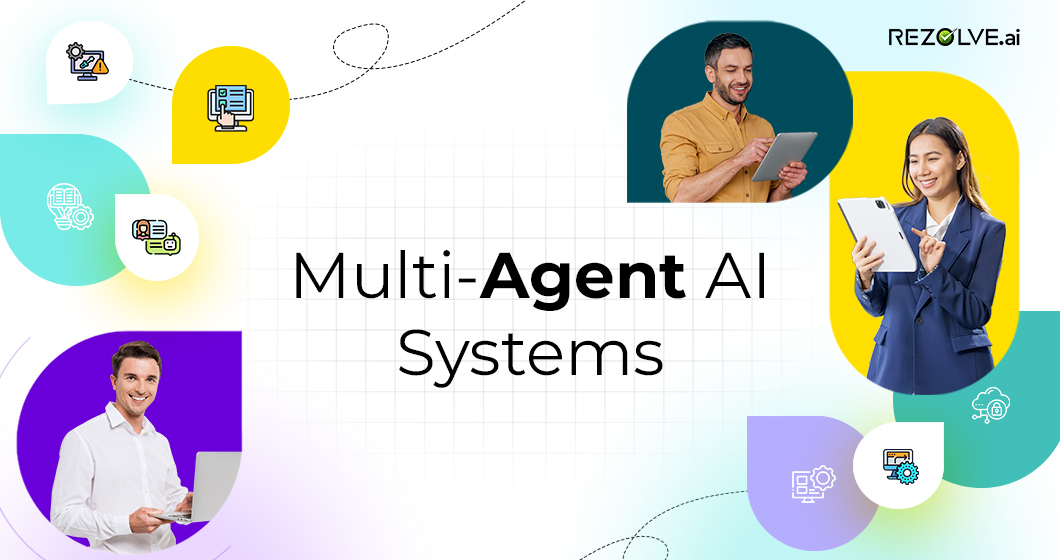


.webp)

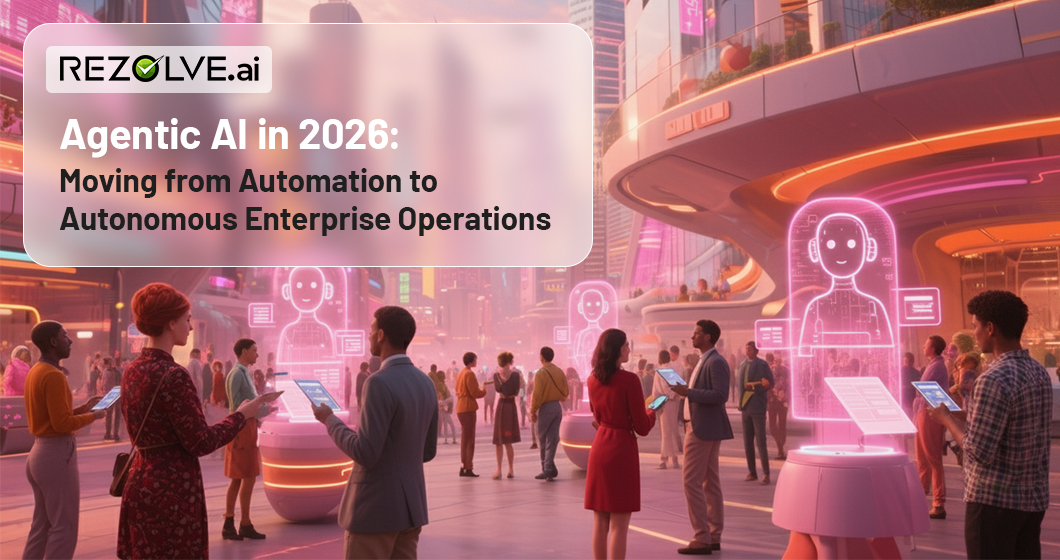
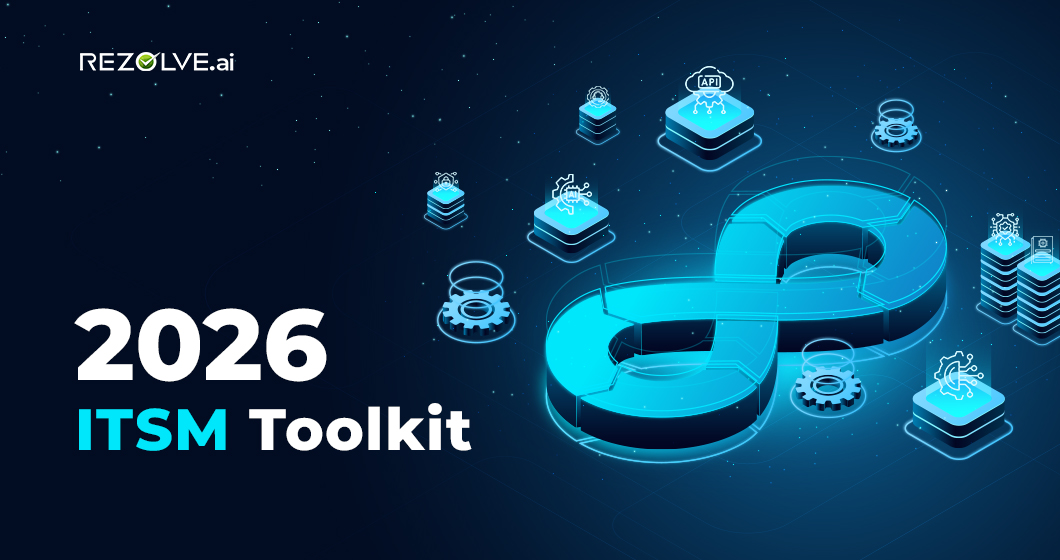

.jpg)

.png)








.png)